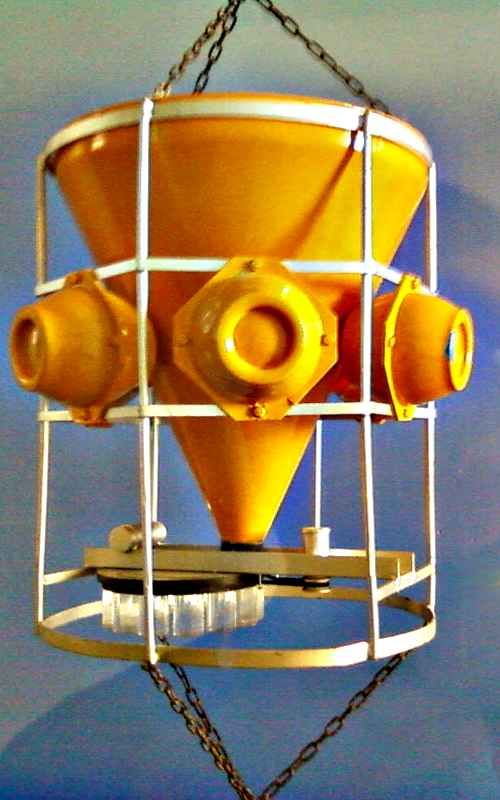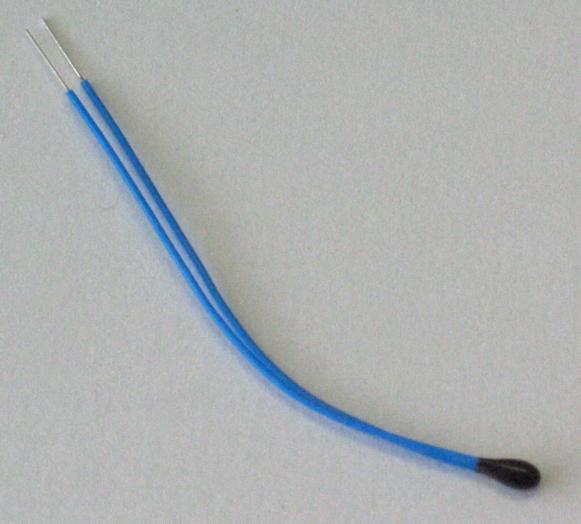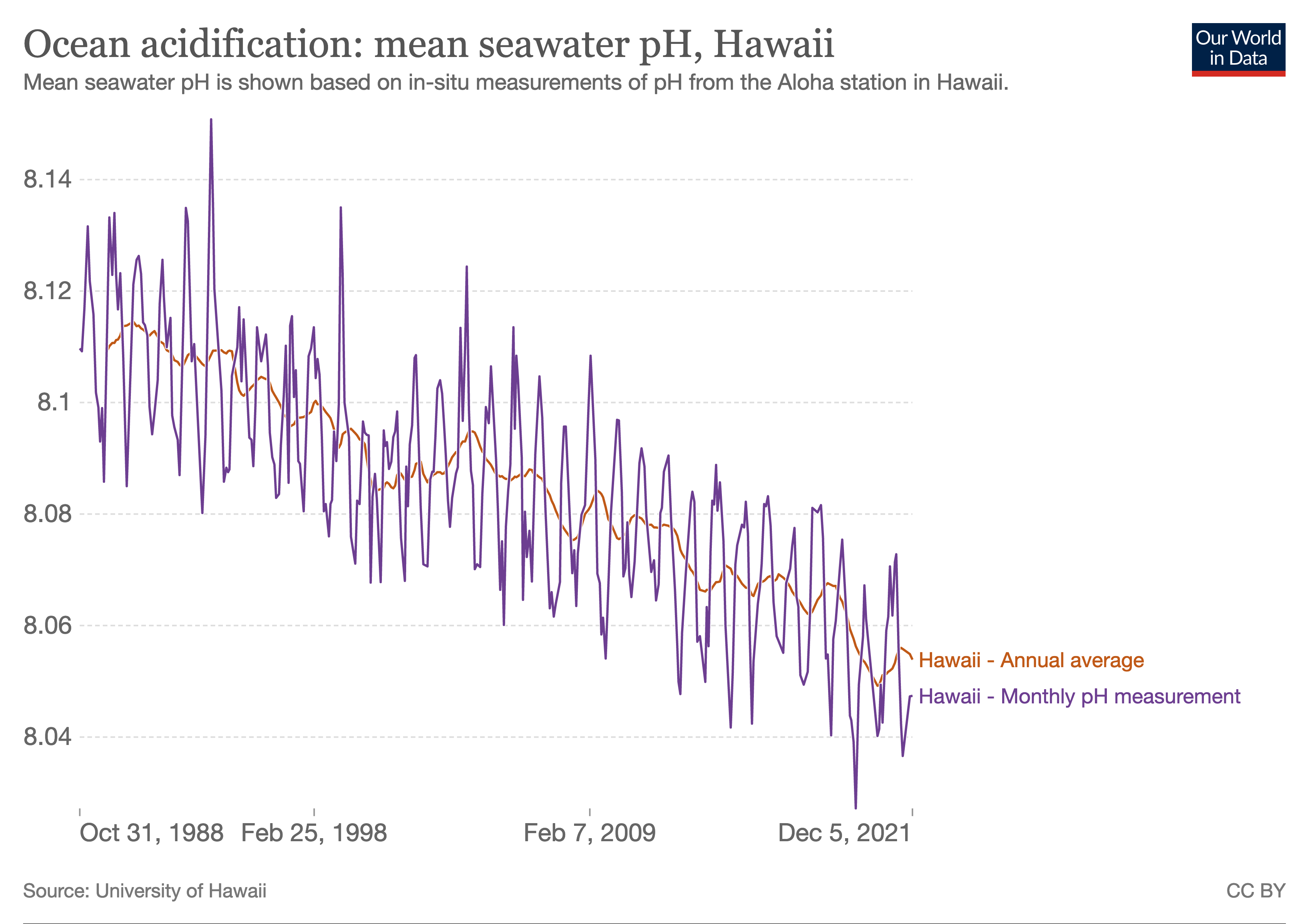|
Hawaii Ocean Time-series
The Hawaii Ocean Time-series (HOT) program is a long-term oceanographic study based at the University of Hawaii at Manoa. In 2015, the American Society for Microbiology designated the HOT Program's field site Station ALOHA (A Long-Term Oligotrophic Habitat Assessment; ()) a "Milestone in Microbiology", for playing "a key role in defining the discipline of microbial oceanography and educating the public about the vital role of marine microbes in global ecosystems." Scientists working on the Hawaii Ocean Time-series (HOT) program have been making repeated observations of the hydrography, chemistry and biology of the water column at a station north of Oahu, Hawaii since October 1988. The objective of this research is to provide a comprehensive description of the ocean at a site representative of the North Pacific Subtropical Gyre. Cruises are made approximately once per month to the deep-water Station ALOHA located 100 km north of Oahu, Hawaii. Measurements of the thermohaline s ... [...More Info...] [...Related Items...] OR: [Wikipedia] [Google] [Baidu] |
Oceanography
Oceanography (), also known as oceanology and ocean science, is the scientific study of the oceans. It is an Earth science, which covers a wide range of topics, including ecosystem dynamics; ocean currents, waves, and geophysical fluid dynamics; plate tectonics and the geology of the sea floor; and fluxes of various chemical substances and physical properties within the ocean and across its boundaries. These diverse topics reflect multiple disciplines that oceanographers utilize to glean further knowledge of the world ocean, including astronomy, biology, chemistry, climatology, geography, geology, hydrology, meteorology and physics. Paleoceanography studies the history of the oceans in the geologic past. An oceanographer is a person who studies many matters concerned with oceans, including marine geology, physics, chemistry and biology. History Early history Humans first acquired knowledge of the waves and currents of the seas and oceans in pre-historic times. Observations ... [...More Info...] [...Related Items...] OR: [Wikipedia] [Google] [Baidu] |
Carbon
Carbon () is a chemical element with the symbol C and atomic number 6. It is nonmetallic and tetravalent In chemistry, the valence (US spelling) or valency (British spelling) of an element is the measure of its combining capacity with other atoms when it forms chemical compounds or molecules. Description The combining capacity, or affinity of an ...—its atom making four electrons available to form covalent bond, covalent chemical bonds. It belongs to group 14 of the periodic table. Carbon makes up only about 0.025 percent of Earth's crust. Three Isotopes of carbon, isotopes occur naturally, Carbon-12, C and Carbon-13, C being stable, while Carbon-14, C is a radionuclide, decaying with a half-life of about 5,730 years. Carbon is one of the Timeline of chemical element discoveries#Ancient discoveries, few elements known since antiquity. Carbon is the 15th Abundance of elements in Earth's crust, most abundant element in the Earth's crust, and the Abundance of the c ... [...More Info...] [...Related Items...] OR: [Wikipedia] [Google] [Baidu] |
University-National Oceanographic Laboratory System
The University-National Oceanographic Laboratory System (UNOLS) is a group of academic institutions and National Laboratories organized in the United States to coordinate research vessel use for federally funded ocean research. Authority The UNOLS system grew from the recognition during the rapid expansion of oceanographic activity that there was no organized means of coordinating ship time requests of researchers, particularly those from institutions not operating vessels and that more expensive ships were not the answer. Federal research sponsors were concerned about more effective use of those expensive assets. Even though a more formal National Oceanographic Laboratory system was not established the less formal and less federally controlled cooperative system of the University-National Oceanographic Laboratory System was established. The form this took lay between federal control of the fleet and uncoordinated use of the often federally owned research vessels at the institutions ... [...More Info...] [...Related Items...] OR: [Wikipedia] [Google] [Baidu] |
Sediment Trap
Sediment traps are instruments used in oceanography and limnology to measure the quantity of sinking particulate organic (and inorganic) material in aquatic systems, usually oceans, lakes, or reservoirs. This flux of material is the product of biological and ecological processes typically within the surface euphotic zone, and is of interest to scientists studying the role of the biological pump in the carbon cycle. Sediments traps normally consist of an upward-facing funnel that directs sinking particulate matter (e.g. marine snow) towards a mechanism for collection and preservation. Typically, traps operate over an extended period of time (weeks to months) and their collection mechanisms may consist of a series of sampling vessels that are cycled through to allow the trap to record the changes in sinking flux with time (for instance, across a seasonal cycle). Preservation of collected material is necessary because of these long deployments, and prevents sample decomposi ... [...More Info...] [...Related Items...] OR: [Wikipedia] [Google] [Baidu] |
Inverted Echosounders
Inverse or invert may refer to: Science and mathematics * Inverse (logic), a type of conditional sentence which is an immediate inference made from another conditional sentence * Additive inverse (negation), the inverse of a number that, when added to the original number, yields zero * Compositional inverse, a function that "reverses" another function * Inverse element * Inverse function, a function that "reverses" another function **Generalized inverse, a matrix that has some properties of the inverse matrix but not necessarily all of them * Multiplicative inverse (reciprocal), a number which when multiplied by a given number yields the multiplicative identity, 1 ** Inverse matrix of an Invertible matrix Other uses * Invert level, the base interior level of a pipe, trench or tunnel * ''Inverse'' (website), an online magazine * An outdated term for an LGBT person; see Sexual inversion (sexology) See also * Inversion (other) Inversion or inversions may refer to: Ar ... [...More Info...] [...Related Items...] OR: [Wikipedia] [Google] [Baidu] |
Video Camera
A video camera is an optical instrument that captures videos (as opposed to a movie camera, which records images on film). Video cameras were initially developed for the television industry but have since become widely used for a variety of other purposes. Video cameras are used primarily in two modes. The first, characteristic of much early broadcasting, is live television, where the camera feeds real time images directly to a screen for immediate observation. A few cameras still serve live television production, but most live connections are for security, military/tactical, and industrial operations where surreptitious or remote viewing is required. In the second mode the images are recorded to a storage device for archiving or further processing; for many years, videotape was the primary format used for this purpose, but was gradually supplanted by optical disc, hard disk, and then flash memory. Recorded video is used in television production, and more often surveillance and ... [...More Info...] [...Related Items...] OR: [Wikipedia] [Google] [Baidu] |
Hydrophones
A hydrophone ( grc, ὕδωρ + φωνή, , water + sound) is a microphone designed to be used underwater for recording or listening to underwater sound. Most hydrophones are based on a piezoelectric transducer that generates an electric potential when subjected to a pressure change, such as a sound wave. Some piezoelectric transducers can also serve as a sound projector, but not all have this capability, and some may be destroyed if used in such a manner. A hydrophone can detect airborne sounds, but will be insensitive because it is designed to match the acoustic impedance of water, a denser fluid than air. Sound travels 4.3 times faster in water than in air, and a sound wave in water exerts a pressure 60 times that exerted by a wave of the same amplitude in air. Similarly, a standard microphone can be buried in the ground, or immersed in water if it is put in a waterproof container, but will give poor performance due to the similarly bad acoustic impedance match. History The ... [...More Info...] [...Related Items...] OR: [Wikipedia] [Google] [Baidu] |
Current Meters
Currents, Current or The Current may refer to: Science and technology * Current (fluid), the flow of a liquid or a gas ** Air current, a flow of air ** Ocean current, a current in the ocean *** Rip current, a kind of water current ** Current (stream), currents in rivers and streams ** Convection current, flow caused by unstable density variation due to temperature differences * Current (mathematics), geometrical current in differential topology * Conserved current, a field associated to a symmetry in field theory * Electric current, a flow of electric charge through a medium * Probability current, in quantum mechanics * IBM Current, an early personal information management program Arts and entertainment Music * ''Current'' (album), a 1982 album by Heatwave * ''Currents'' (Eisley album) * ''Currents'' (Tame Impala album) * "The Current" (song), by the Blue Man Group * "Currents", a song by Dashboard Confessional from ''Dusk and Summer'', 2006 * "Currents", a song by Drake fr ... [...More Info...] [...Related Items...] OR: [Wikipedia] [Google] [Baidu] |
Thermistors
A thermistor is a type of resistor whose resistance is strongly dependent on temperature, more so than in standard resistors. The word thermistor is a portmanteau of ''thermal'' and ''resistor''. Thermistors are divided based on their conduction model. Negative Temperature Coefficient (NTC) thermistors have ''less'' resistance at ''higher'' temperatures, while Positive Temperature Coefficient (PTC) thermistors have ''more'' resistance at ''higher'' temperatures. Hence, a PTC thermistor's resistance is directly proportional to temperature. NTC thermistor are widely used as inrush current limiters, temperature sensors, while PTC thermistors are used as self-resetting overcurrent protectors, and self-regulating heating elements. An operational temperature range of a thermistor is dependent on the probe type and is typically between −100 °C and 300 °C (−148 °F and 572 °F). Types Depending on materials used, thermistors are classified into two types: *With ''NTC'' the ... [...More Info...] [...Related Items...] OR: [Wikipedia] [Google] [Baidu] |
Cabled Observatory
Cabled observatories are seabed oceanographic research platforms connected to the surface by undersea cables. Such cables supply both power and telecommunications to instruments. By removing the limitations of undersea power sources and sonar or RF communications, cabled observatories allow persistent study of underwater phenomena. A single cable can support multiple observation sites via individual "drops;" multiple or branching cables may then provide data in 2D or 3D. The extent of coverage is limited by the high cost of laying dedicated undersea cable. Initial experiments used abandoned communications cables; efforts are in progress to extend observations at lower cost by accessing more such cables. Despite their advantages, cabled observatories can (and do) relay compromised data to scientists, particularly when located in remote parts of the ocean. Factors such as instrumental malfunction and biofouling are often responsible for this. Systematic improvements, to lessen the ... [...More Info...] [...Related Items...] OR: [Wikipedia] [Google] [Baidu] |
Woods Hole Oceanographic Institution
The Woods Hole Oceanographic Institution (WHOI, acronym pronounced ) is a private, nonprofit research and higher education facility dedicated to the study of marine science and engineering. Established in 1930 in Woods Hole, Massachusetts, it is the largest independent oceanographic research institution in the U.S., with staff and students numbering about 1,000. Constitution The Institution is organized into six departments, the Cooperative Institute for Climate and Ocean Research, and a marine policy center. Its shore-based facilities are located in the village of Woods Hole, Massachusetts, United States and a mile and a half away on the Quissett Campus. The bulk of the Institution's funding comes from grants and contracts from the National Science Foundation and other government agencies, augmented by foundations and private donations. WHOI scientists, engineers, and students collaborate to develop theories, test ideas, build seagoing instruments, and collect data in diverse ... [...More Info...] [...Related Items...] OR: [Wikipedia] [Google] [Baidu] |
Ocean Acidification
Ocean acidification is the reduction in the pH value of the Earth’s ocean. Between 1751 and 2021, the average pH value of the ocean surface has decreased from approximately 8.25 to 8.14. The root cause of ocean acidification is carbon dioxide emissions from human activities which have led to atmospheric carbon dioxide (CO2) levels of more than 410 ppm (in 2020). The oceans absorb CO2 from the atmosphere. This leads to the formation of carbonic acid (H2CO3) which dissociates into a bicarbonate ion () and a hydrogen ion (H+). The free hydrogen ions (H+) decrease the pH of the ocean, therefore increasing acidity (this does not mean that seawater is acidic yet; it is still alkaline, with a pH higher than 8). A decrease in pH corresponds to a decrease in the concentration of carbonate ions, which are the main building block for calcium carbonate (CaCO3) shells and skeletons. Marine calcifying organisms, like mollusks, oysters and corals, are particularly affected by this as ... [...More Info...] [...Related Items...] OR: [Wikipedia] [Google] [Baidu] |





.jpg)
